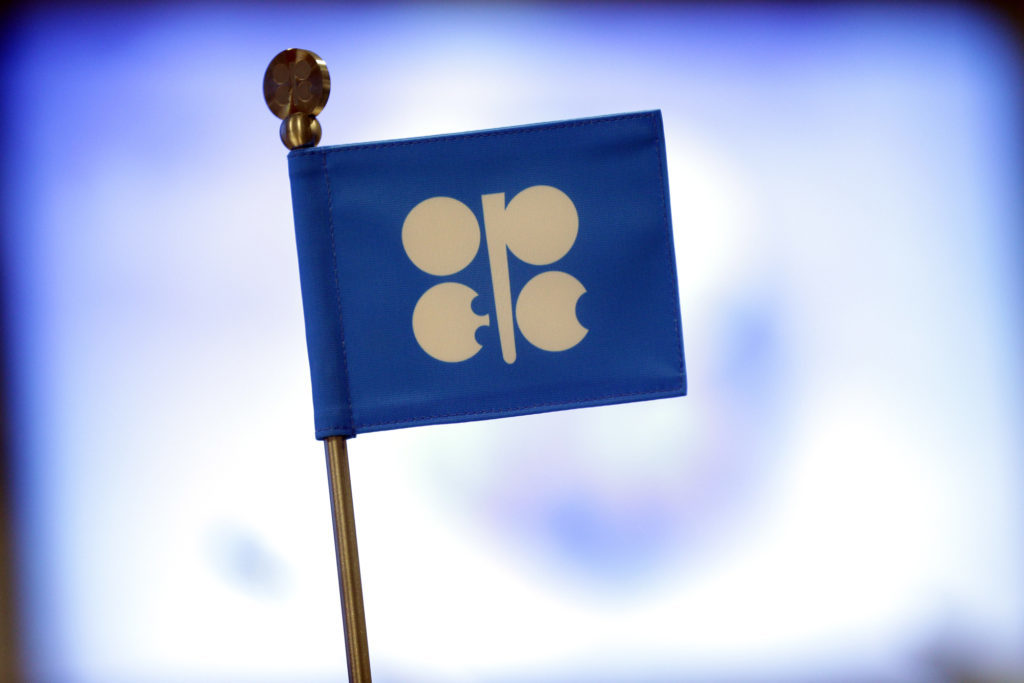
Brent crude headed for its biggest weekly gain since July 2017 as OPEC’s production cuts outweighed concerns over the health of the global economy.
The global benchmark is on track for an 9.3 percent advance this week after rebounding Friday from earlier losses. Prices have rallied as Saudi Arabia slowed pumping even before OPEC’s deal to reduce output went into effect. That’s added to bullish sentiment from progress in trade talks between the world’s biggest economies and helped offset wider stock market turmoil driven by fears of a slowdown in China.
Oil’s positive start to 2019 follows its worst quarter in four years and a 20 percent annual loss driven by panic over a growing glut of crude. While OPEC’s output plunged by the most in almost two years last month and producers have pledged to curb supplies through the first half of 2019, concerns about the oversupply prevail as stockpiles at America’s main storage hub show signs of swelling.
“While crude seemed to have bottomed out and is expected to edge higher, there’s a possibility for additional drops along the way, driven by seasonal factors and risks from wider financial markets,” said Hong Sungki, a commodities trader at NH Investment & Securities Co. in Seoul. “Still, oil rebounded yesterday, shaking off the slump in equities, which is an encouraging sign.”
Brent for March settlement rose as much as $1.11, or 2 percent, to $57.06 a barrel on the ICE Futures Europe exchange, after earlier falling as much as 1.1 percent. The benchmark crude was at $57 a barrel at 8:13 a.m. in London.
West Texas Intermediate for February delivery rose $1.04, or 2.2 percent, to $48.13 a barrel on the New York Mercantile Exchange. Prices are up 6.2 percent this week, the most since June. The March contract traded at a discount of $8.68 to Brent.
See also: Beyond OPEC or Shale Lurk Lesser-Known Cues for Oil in 2019
Saudi Arabia, the world’s biggest crude exporter, trimmed production last month, bringing overall output in the Organization of Petroleum Exporting Countries down 530,000 barrels a day to 32.6 million a day, according to a Bloomberg survey of officials, analysts and ship-tracking data. That’s the sharpest pullback since January 2017 when OPEC started on its strategy to clear a glut created by surging supplies from shale producers.
Oil has risen for five days, shaking off concern over global growth that’s hammered stock markets this week. Optimism that the U.S. and China are working towards a thaw in trade tensions has helped bolster prices.
China said a U.S. delegation will visit next week for trade talks, confirming the two sides will have their first face-to-face negotiation since President Donald Trump and his counterpart Xi Jinping agreed to a 90-day truce in their trade war last month.
In the U.S., the American Petroleum Institute was said to report oil inventories at the storage hub in Cushing, Oklahoma, have risen by 483,000 barrels last week. That would be a sixth consecutive weekly increase if confirmed by government data on Friday. While gasoline stockpiles jumped 8 million barrels, the nationwide crude hoard fell 4.46 million barrels last week, according to the API.
Other oil-market news: The majority of oil executives surveyed by the Dallas Fed are still planning to boost spending in the next year, even after a plunge in prices. Saudi Arabia raised pricing for most crude grades to Asia and for all blends to buyers in the U.S. for delivery in February as the world’s biggest exporter cuts output to clear a global oil glut.
Recommended for you
